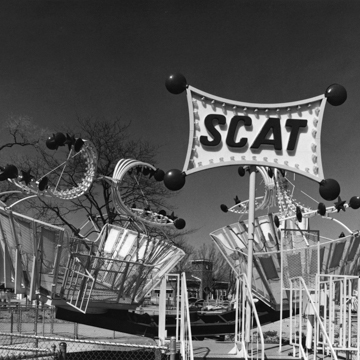American amusement parks generally trace their origins to the World’s Columbian Exposition of 1893 in Chicago, but some elements date back further. Europeans entertained themselves with roller coasters and mechanical carousels as early as 1804 and 1832, respectively, and other amusement park attractions originated with the fairs and tournaments of medieval Europe. Nevertheless, the Chicago fair of 1893 set the standard for modern amusement parks by introducing the Ferris wheel, the Midway, and other pleasures, all set in a designed landscape. In 1897, the first permanent amusement park opened on New York’s Coney Island. Soon parks across America offered cheap amusements for the middle and working classes.
In Green Bay, Captain John Cusick, who ran an excursion boat out to the Bay View Beach bathing resort, decided to expand the beach into a Coney Island–style attraction. Bay Beach had become so popular by 1908 that Cusick built a streetcar line from his park to Main Street. In 1909, Cusick and his partners built the Beaux-Arts classical Bay View Beach Pavilion, crowned by a domed cupola. Clapboard walls enclosed dining rooms in the central section, a roller-skating rink (long gone) in the west wing, and a dance hall in the east wing. Such famous orchestras as those of Tommy Dorsey, Glenn Miller, and Lawrence Welk performed in this dance hall. In 1934, one hundred thousand people gathered before the pavilion to hear President Franklin Roosevelt commemorate the tercentennial of French explorer Jean Nicolet’s landing in the Green Bay area. (FDR had also come to rally Wisconsin’s Progressives and Democrats behind his ambitious New Deal agenda.) Roosevelt spoke from a bunting-draped stage, set up under the two-story portico facing the bay. The portico’s colossal Tuscan columns, inset balcony (now gone), and broad pediment made for a grand backdrop. On the opposite side of the building, a more modest one-story semicircular portico with coupled Doric columns shelters the double-door entrance. Aluminum siding now clads the walls.
In 1920, Bay Beach’s owners donated the park to the city, which since 1950 has emphasized amusement rides. Today Bay Beach may be America’s only amusement park where admission is free and most rides cost no more than fifty cents each.
Just to the south, the Bay Beach Wildlife Sanctuary, a wetlands preserve, was designated in 1936, largely through the efforts of local conservationist Chester Cole, working with the National Youth Administration, the Works Progress Administration (WPA), and conservationist Aldo Leopold, who served as an advisor.


